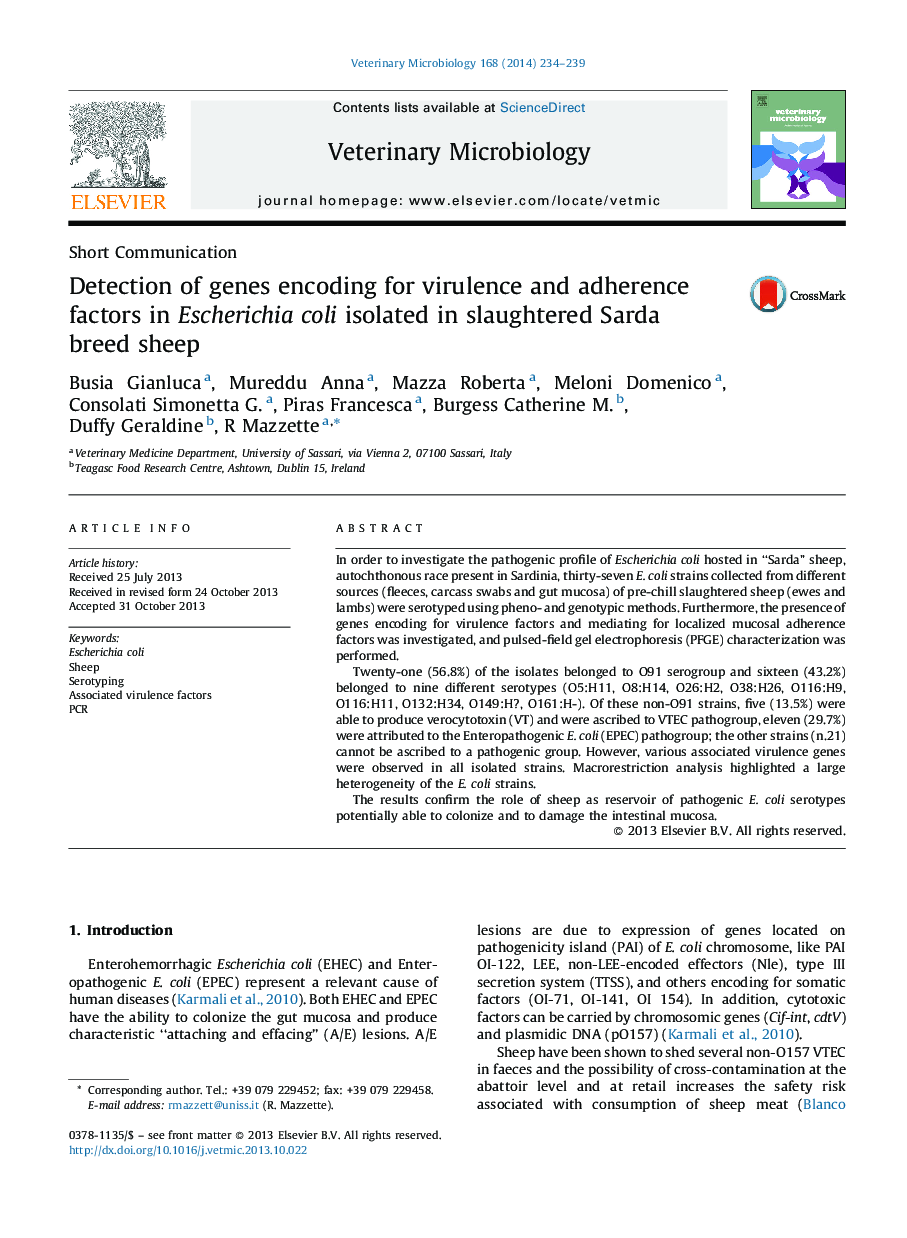| Article ID | Journal | Published Year | Pages | File Type |
|---|---|---|---|---|
| 5801280 | Veterinary Microbiology | 2014 | 6 Pages |
In order to investigate the pathogenic profile of Escherichia coli hosted in “Sarda” sheep, autochthonous race present in Sardinia, thirty-seven E. coli strains collected from different sources (fleeces, carcass swabs and gut mucosa) of pre-chill slaughtered sheep (ewes and lambs) were serotyped using pheno- and genotypic methods. Furthermore, the presence of genes encoding for virulence factors and mediating for localized mucosal adherence factors was investigated, and pulsed-field gel electrophoresis (PFGE) characterization was performed.Twenty-one (56.8%) of the isolates belonged to O91 serogroup and sixteen (43.2%) belonged to nine different serotypes (O5:H11, O8:H14, O26:H2, O38:H26, O116:H9, O116:H11, O132:H34, O149:H?, O161:H-). Of these non-O91 strains, five (13.5%) were able to produce verocytotoxin (VT) and were ascribed to VTEC pathogroup, eleven (29.7%) were attributed to the Enteropathogenic E. coli (EPEC) pathogroup; the other strains (n.21) cannot be ascribed to a pathogenic group. However, various associated virulence genes were observed in all isolated strains. Macrorestriction analysis highlighted a large heterogeneity of the E. coli strains.The results confirm the role of sheep as reservoir of pathogenic E. coli serotypes potentially able to colonize and to damage the intestinal mucosa.
